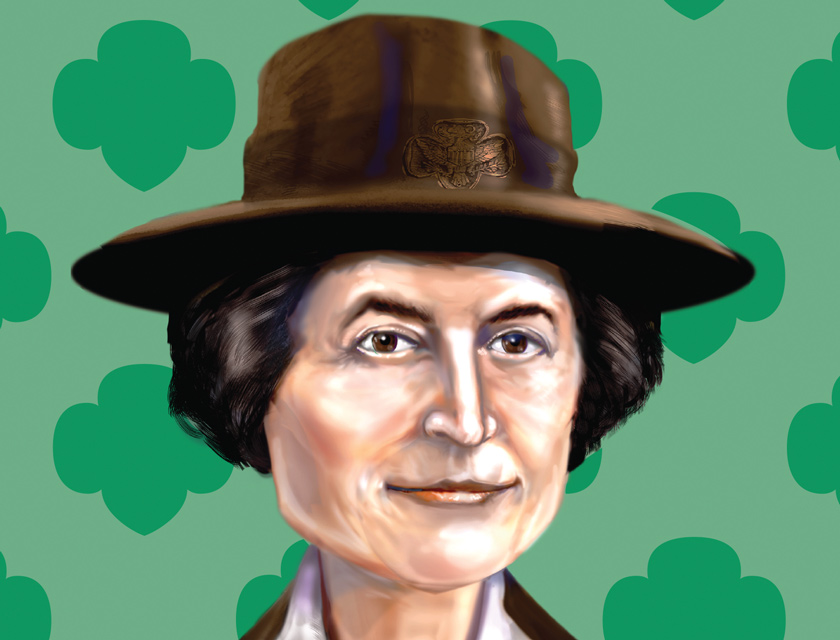The year was 1912. There was urgency in the caller’s voice.
The sinking of the RMS Titanic was only 33 days ahead when Juliette Gordon Low called her cousin, Nina Pape, with a historic proclamation of her own.
“Come right over. I’ve got something for the girls of Savannah, and all America, and all the world, and we’re going to start it tonight.”
Low had just returned from a vacation to Great Britain, where she met Boy Scouts founder Lord Robert Baden-Powell. She decided she was going to form the first Girl Scouts organization.
It wasn’t an uncharacteristic statement for the irrepressible Savannah, Georgia, native, affectionally called “Crazy Daisy” by her brother. She saw possibilities that others could not.
Born on Oct. 31, 1860, to a wealthy family, she was kind-hearted, ambitious and sometimes innocently chaotic. She attended a series of boarding schools that were ill-suited for her more adventurous preferences, including exploring, woodworking and metalworking, and riding her horse named Fire.
She moved to New York City as a young adult to study painting and eventually married wealthy cotton merchant William Mackay Low at 26. During the ceremony—true to her penchant for improbable outcomes—a grain of rice thrown by a well-wisher became lodged in Low’s ear. She was partially deaf the rest of her life.
Low would not be stopped. She was devoted to charity work and helping others, especially females. She foresaw a time when women would be voting and pursuing professions and activities previously reserved for men: carpentry, science, engineering, sports, politics, and more.
Establishing the Girl Scouts was a big part of this. She was actively involved with the Girl Guides before setting up the Girl Scouts national headquarters in Washington, D.C., in 1913. Not surprisingly, the first troop of 18 girls she formed in Savannah was ethnically and culturally diverse.
She got a design patent for the organization’s trefoil badge in 1914—a three-leafed clover design adapted from the Boy Scouts’ similar badge to symbolize equality. The symbol was later registered as a federal trademark and has been a symbol used by Girl Scouts USA to identify its members for over 110 years.
Low’s outgoing personality, contacts and persistence lent themselves to great marketing and branding outreach. There were more than 90,000 active Girl Scouts in the United States by 1925. She stepped down as national president of the Girl Scouts in 1920 to devote more time to promoting Guiding and Scouting internationally.
She died of breast cancer at age 66 in 1927 and was buried in her Girl Scout uniform in Savannah with this note in her pocket: “You are not only the first Girl Scout, but the best Girl Scout of them all.”
The United States issued a postage stamp honoring Low in 1948. In 1965, the Juliette Gordon Low Birthplace became Savannah’s first Registered National Historic Landmark. She posthumously received the U.S Medal of Freedom in 2012.
Today, the Juliette Low World Friendship Fund facilitates international projects for Girl Scouts and Girl Guides around the world.
For more on Low’s life, see the story “A patent for girls’ empowerment” at bit.ly/GordonLow.
This year marks the 10th anniversary of the USPTO trading cards. Requests for the cards can be sent to [email protected]. You can also visit them at uspto.gov/kids.


